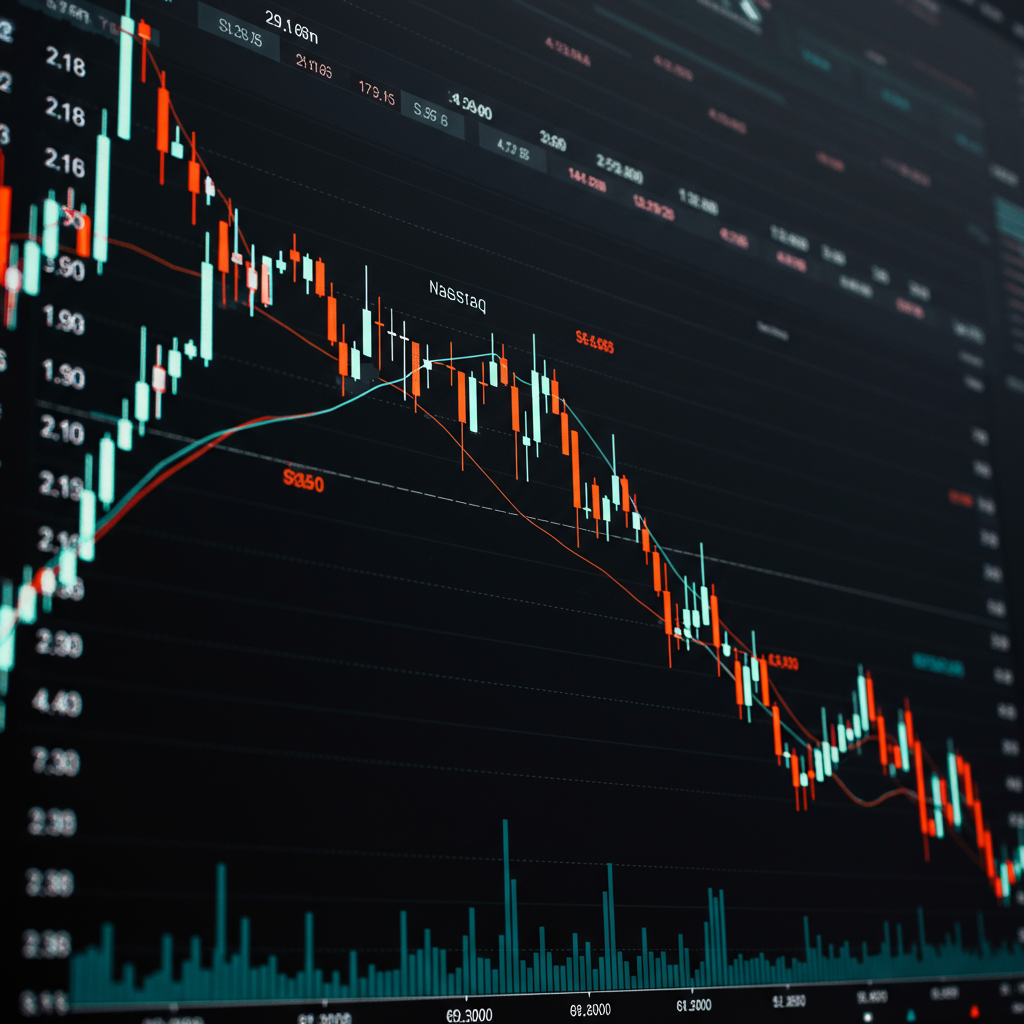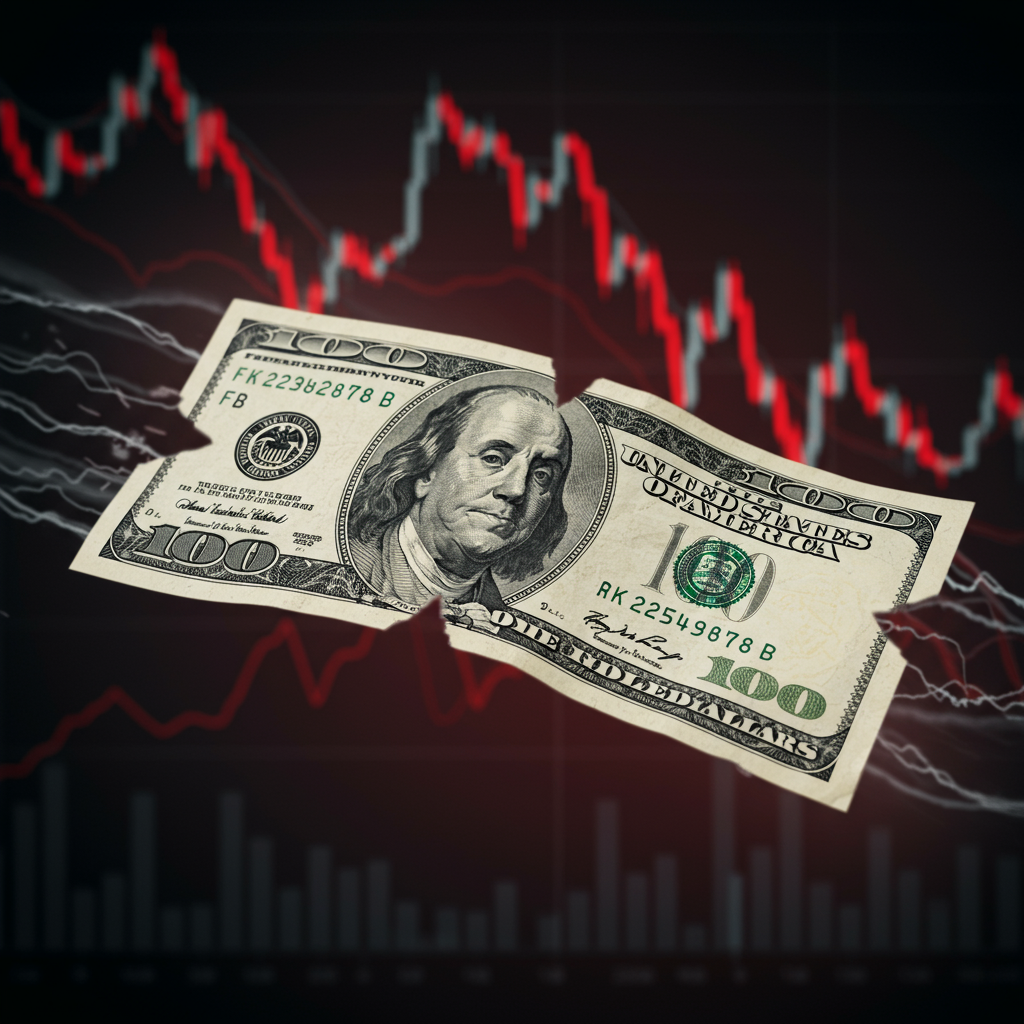Stock markets recently soared to remarkable new heights, with the S&P 500 and Nasdaq Composite indices closing at fresh record levels. However, this ascent was quickly followed by signs of caution, as futures indicated a potential slip and market performance became more mixed. Understanding the forces driving this rapid shift requires looking at a complex interplay of factors, from evolving trade negotiations and signals from the Federal Reserve to specific sector performance and geopolitical developments.
The S&P 500 benchmark index marked a significant milestone, climbing to a new record high above 6,170. This gain represented a notable turnaround from a period in April when the index experienced a sharp decline. In fact, the S&P 500 has rebounded by approximately 24% since that April dip. The tech-heavy Nasdaq Composite also achieved its own all-time high on the same day, showcasing the robust performance of technology stocks. While the Dow Jones Industrial Average also saw strong gains, rising over 1%, it remained just below its previous record peak.
The Powerful Forces Fueling the Record Rally
Several key catalysts combined to propel major US stock indexes to their recent record levels. A significant factor was the easing of global trade tensions.
Shifting Tides in Trade Negotiations
Investor worries were substantially reduced by a shift toward calmer rhetoric regarding tariffs from the White House. Developments suggesting progress in trade negotiations were particularly positive for market sentiment. President Trump indicated agreements were being reached, specifically mentioning a signed deal with China and an expected agreement with India. Furthermore, Treasury Secretary Scott Bessent hinted at a potential postponement of an upcoming tariff deadline, suggesting a trade resolution could be in sight by Labor Day. Analysts noted that these favorable trade headlines played a crucial role in extending stock market gains.
Anticipation of Federal Reserve Rate Cuts
Signals from the Federal Reserve also provided a strong tailwind for the market. Fed Chair Jerome Powell indicated that the central bank might consider lowering interest rates “sooner rather than later.” This prospect of cheaper borrowing costs and potentially stimulated economic activity was well-received by investors. Powell balanced this by emphasizing the Fed’s flexibility and independence, focusing solely on a stable economy despite political pressure for rate cuts.
Technology Stocks Lead the Charge
The technology sector demonstrated exceptional strength, contributing significantly to the Nasdaq’s record performance. The Nasdaq 100 index, home to major tech giants like Nvidia (NVDA), Microsoft (MSFT), and Apple (AAPL), reached a fresh closing high. This highlighted strong momentum and investor confidence in megacap technology companies driving market gains.
Easing Geopolitical Risk
Reduced fears regarding geopolitical instability also contributed to the positive sentiment. Growing optimism surrounding a US-brokered ceasefire between Israel and Iran helped ease market worries about potential disruptions, particularly concerning critical oil supply routes like the Strait of Hormuz. The deescalation in regional hostilities led to a decline in oil prices, further supporting the relief rally.
A Turn in the Tide? Mixed Signals Emerge
Despite reaching new peaks, the market’s ascent encountered friction. Following the record-setting day, futures pulled back, and subsequent market performance showed mixed results across the major indices. This wavering occurred as investors digested new information and reassessed previous assumptions.
Powell’s Second Day Testimony Adds Nuance
While Fed Chair Powell’s initial comments hinted at rate cuts, his second day of congressional testimony provided a more nuanced view, particularly regarding the impact of tariffs. Powell stated that inflationary effects from tariffs were still being studied but would likely appear over the coming months. He noted that “someone has to pay” for the hundreds of billions in tariffs, implying a potential impact on consumers and inflation. This perspective tempered some of the earlier optimism fueled by his hints of imminent rate cuts. Markets are now closely watching upcoming economic data, especially the Personal Consumption Expenditures (PCE) report, for further clues on monetary policy direction and how tariffs might influence inflation forecasts.
Political Commentary and Ongoing Uncertainty
Political factors continued to influence market sentiment. President Trump’s comments on the Israel-Iran conflict, stating it was “over” for now, coincided with slightly higher oil prices despite the truce appearing to hold. Additionally, his remarks about potentially considering replacements for Fed Chair Powell added another layer of uncertainty regarding the future direction of monetary policy leadership.
Spotlight on Individual Stocks and Sectors
Beyond the major indexes, specific company performance significantly impacted overall market movements.
Nvidia’s Continued Ascent
Nvidia remained a powerful force, surging by 4% to achieve a new record closing price. Analysts raised price targets on the stock, citing its “essentially a monopoly for critical tech” in the burgeoning artificial intelligence (AI) chips market. This performance underscores the sector’s importance and investor belief in the long-term growth trajectory of AI infrastructure, forecasted to reach hundreds of billions by 2030.
Divergent Performance Across the Market
While the Technology sector as a whole remained strong, not all stocks shared in the gains. Tesla (TSLA), for example, experienced a notable decline following reports of a significant drop in its new car registrations in the European Union. This highlights that even within the broader rally, specific company fundamentals and regional sales data remain critical drivers of individual stock performance. Other stocks like Micron (MU) saw movement related to earnings reports and investment plans, while Reddit (RDDT) benefited from speculation around AI tools and Google AI overviews. Some consumer staple companies like Campbell’s (CPB) and General Mills (GIS) faced challenges as consumers became more price-sensitive, leading to softer demand for certain brands.
Inflation and Valuation Considerations
The latest inflation data revealed that prices rose 2.3% year-over-year in May, an increase from April. Core inflation, excluding volatile food and energy, also edged higher. This data is crucial as the Fed monitors price stability alongside employment targets.
Regarding market valuation, while the S&P 500’s price-to-earnings ratio is currently above historical averages, some analysts argue this reflects investor confidence rather than being unsustainable. Data suggests that when broken down, the most expensive stocks are less stretched in valuation compared to the peak of the 2021 market boom. Nevertheless, caution persists.
Expert Outlook and Potential Headwinds
Despite the recent records and optimism fueled by trade and Fed expectations, Wall Street analysts caution against complacency. Geopolitical tensions, although seemingly easing, remain a potential source of volatility. Analysts warn that the market might be exhibiting “a dangerous amount of complacency on trade/tariffs,” citing repeated celebrations of trade deal prospects. While many large companies are expected to navigate tariff impacts reasonably well, as potentially demonstrated in the upcoming second-quarter earnings season, overall financial markets could still face bumps ahead. Investors are seen as currently pricing in reductions in both trade frictions and geopolitical tensions, but any reversal in these trends could trigger market reactions.
Frequently Asked Questions
Why did major US stock indexes recently reach record highs?
Major indexes like the S&P 500 and Nasdaq Composite hit record highs primarily due to a combination of factors. Easing global trade tensions, particularly regarding tariffs, reduced investor anxiety. Expectations that the Federal Reserve might lower interest rates “sooner rather than later” improved market sentiment. Strong performance from the technology sector, led by companies like Nvidia, also contributed significantly. Furthermore, a temporary deescalation of geopolitical tensions in the Middle East helped calm markets.
How might the Federal Reserve’s comments on tariffs impact future interest rates?
Fed Chair Jerome Powell hinted at potential interest rate cuts but also stated that inflationary effects from tariffs are expected to appear in the coming months and that “someone has to pay” for them. This suggests that while the Fed is considering cuts, they will also monitor how tariffs influence inflation. If tariffs lead to significant price increases, this could potentially temper the pace or extent of future rate cuts, balancing the Fed’s goals of price stability and economic support.
What key factors could influence stock market volatility moving forward?
Several factors could introduce volatility after the recent records. Continued uncertainty around the details and timeline of trade agreements remains a risk. Any shifts in the Federal Reserve’s stance on interest rates, particularly in response to upcoming economic data like inflation reports (such as the PCE), could impact market direction. Geopolitical developments, corporate earnings reports from the upcoming season, and shifts in investor sentiment regarding market valuation also represent potential headwinds or catalysts for market fluctuations.
Looking Ahead: What Investors Should Watch
The stock market’s recent surge to new records, followed by a slight pause and mixed performance, underscores the dynamic nature of current financial conditions. Key drivers like progress on trade, Federal Reserve policy signals, and strong performance in certain sectors have been powerful catalysts. However, potential headwinds remain, including the actual impact of tariffs on inflation, ongoing geopolitical risks, and shifts in economic data. As the second-quarter earnings season approaches and policymakers continue to communicate their intentions, investors will be closely watching for clarity and guidance on the market’s path forward. Staying informed about these interconnected global factors is essential for navigating the evolving market landscape.




